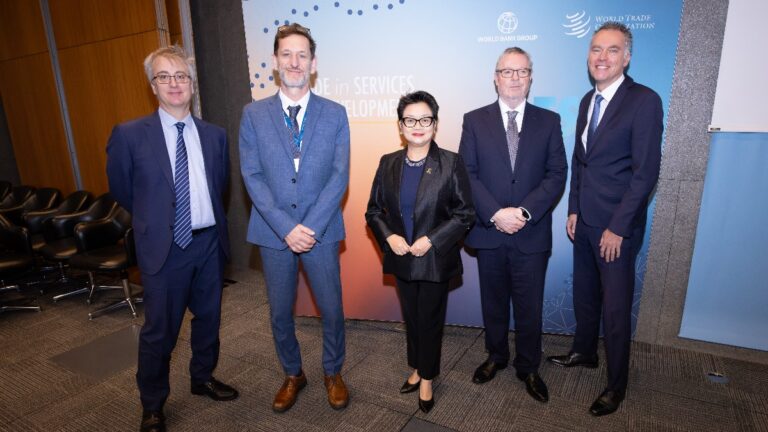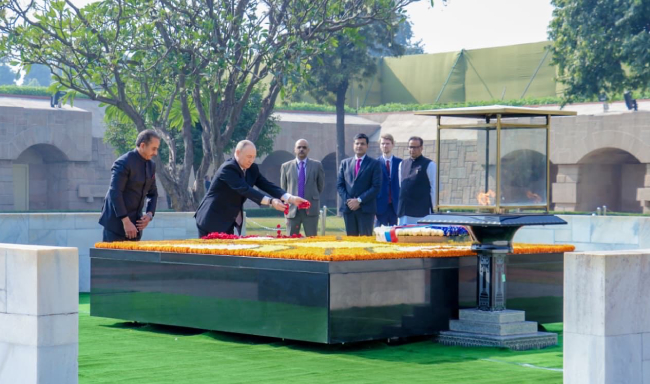
Geneva: Access to healthcare is a pressing concern throughout Ukraine since the onset of the full-scale war in Ukraine three years ago. The World Health Organization (WHO) today reported more than 2,254 assaults on healthcare facilities since the onset of the full-scale invasion in February 2022. A significant 25% of the population has reported diminished access to medical services and financial constraints remain a substantial obstacle, with 35% of individuals in October 2024 admitting to delaying medical treatment due to economic difficulties.
Internally displaced persons (IDPs) represent one of the most at-risk demographics. Thirteen per cent of IDPs are without access to primary healthcare facilities, a stark contrast to the 6% among host communities. Additionally, 9% of IDPs lack a family doctor, compared to 4% of local residents, and 12% have not established a declaration with a family doctor, while only 5% of those in host communities face the same issue. Although IDPs report improvements in healthcare quality compared to locals, their access to essential primary care and preventive services remains significantly lower.
The disparity in healthcare access is becoming increasingly pronounced, especially in frontline regions. The most severely damaged and dysfunctional healthcare facilities are situated along the front lines, where the remaining residents often contend with multiple vulnerabilities, such as age or disabilities. These facilities frequently experience interruptions in medical supplies, staff shortages, and considerable barriers to care. In ten frontline oblasts, 68% of adults report a decline in their health. The rates of healthcare refusal are particularly high in Kherson at 43%, followed by Kharkiv at 24% and Zaporizhzhia at 18%. The ongoing disruptions in these areas highlight the critical need for continuous support and targeted interventions.
The healthcare system is grappling with extraordinary difficulties that show no signs of abating. As of 2025, these attacks continue unabated, with nearly daily documentation of incidents. So far this year, 42 attacks have been recorded, leading to 12 injuries and 3 fatalities. A recent overnight strike in Odesa severely damaged the region’s largest and most advanced children’s clinic, disrupting essential services and exemplifying the ongoing and distressing trend. This incident underscores the relentless dangers and challenges that healthcare professionals face, as well as the ongoing disruptions in the provision of medical care throughout Ukraine.
“Being a doctor in wartime means returning home after each shift, wishing the war had never happened and praying for its swift end. People are exhausted – both the patients and the healthcare workers. Yet, as medical professionals, we do not have the luxury of being tired. Our patients need us to keep going and we must push through the fatigue to continue delivering the care they deserve,” says Olha Zavyalova, an emergency physician and surgeon from the Dnipro region.
Shifting health needs
The ongoing conflict in Ukraine, marked by three years of intense warfare and over a decade of invasion, has significantly affected the nation’s health landscape. A recent assessment by the WHO, conducted in October 2024, reveals that 68% of Ukrainians feel their health has worsened since the onset of the war. Mental health issues are particularly alarming, with 46% of the population reporting concerns, while 41% suffer from mental health disorders and 39% from neurological conditions.
Noncommunicable diseases (NCDs) are responsible for a staggering 84% of all fatalities in Ukraine. Patients with NCDs face critical challenges in accessing care, primarily due to a lack of available services and the prohibitive costs of medications, which leaves those with chronic illnesses at risk of interrupted treatment and serious health decline. The war has heightened the demand for healthcare, especially in trauma care and rehabilitation. The Ministry of Health projects that by mid-2024, around 100,000 amputations will have been performed as a result of the conflict. The acute shortage of trauma specialists, prosthetic devices, and rehabilitation services has worsened the situation. Recovery is often a lengthy process, but it also hinges on the availability of opportunities for long-term rehabilitation, which is crucial for the physical and mental healing of those affected by the war.
WHO said it is addressing Ukraine’s growing health needs, working to ensure access to quality health care for all Ukrainians, with a focus on strengthening primary health care to combat the prevalence of NCDs and expanding access to vital mental health and rehabilitation services. We are also supporting building a resilient health system by collaborating with the Ministry of Health and the National Health Service of Ukraine to update reimbursement packages, including rehabilitation, and standardised assessment tools. This ensures that resources are allocated where needed most, laying a stronger foundation for quality care.
Key achievements on mental health include developing the ‘Target Model of the Mental Health and Psychosocial Support System of Ukraine’ and the ‘2024–2026 National Mental Health Action Plan’, along with 24 oblast-level plans. Rehabilitation is a key highlight for our efforts in building the capacity of professionals. By the end of 2024, WHO conducted training for multidisciplinary rehabilitation teams from 28 non-specialized inpatient rehabilitation departments from 11 oblasts.
A key milestone was the reform of Ukraine’s stroke care system, with WHO leading technical discussions, conducting clinical audits and supporting the monitoring of over 50 healthcare facilities to improve acute care. WHO also introduced the Package of essential NCD interventions, emphasizing integrated care for low-resource settings. On antimicrobial resistance, the National Action Plan was approved, with ongoing training for healthcare workers and facility modernization. WHO also supported primary healthcare financing through costing exercises, payment design and network development, culminating in the Ministry of Health’s approval of a capitation rate methodology in July 2024.
Last year, WHO said it shifted focus from emergency relief to capacity building, prioritizing primary care and critical areas such as NCDs, immunizations, mental health, HIV, tuberculosis, infection control and addressing antimicrobial resistance. WHO is collaborating with Ukrainian authorities to enhance health responses and recovery efforts, including the installation of 29 modular primary health clinics in affected regions. WHO is also supporting health finance reforms, including capacity building, procurement transparency and strategic planning to strengthen Ukraine’s health system, ensuring that it remains resilient amid ongoing challenges. In addition, professional development opportunities for nurses and healthcare workers are being expanded to address workforce shortages and bolster the overall health system.
WHO today called on its international partners: “More than ever, we need your support now. Together, we can ensure that no one in Ukraine is left behind.”
– global bihari bureau





